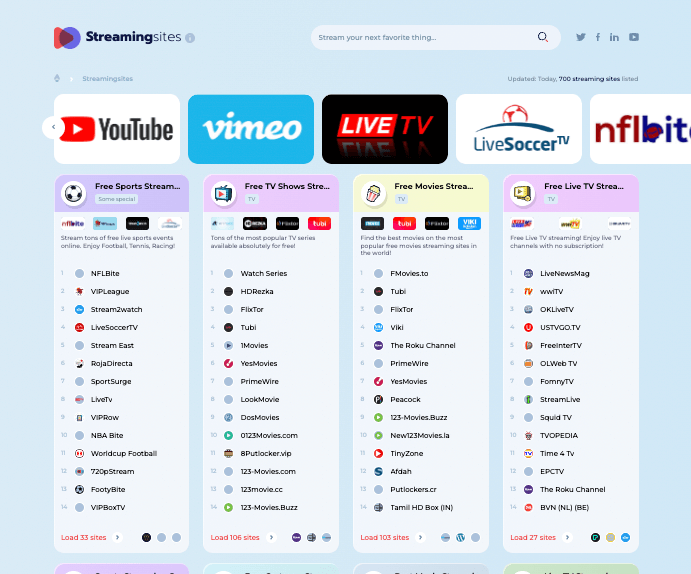
undefined + undefined Like
Your location from and identity IP is exposed due to .Protect Your Privacy And Maximize The Streaming Speed!

Protect Your Privacy And Maximize The Streaming Speed!
Related categories

Free Sports Streaming SitesStreaming sites
43+

Free Movies Streaming SitesTV
155+

IPTV Stream ServicesStreaming sites
41+

Online Sports Betting SitesStreaming sites
34+

Free Live TV Streaming SitesTV
67+
Get Planet VPN 

Free TV Shows Streaming SitesTV
151+

Anime Streaming SitesStreaming sites
68+

Sports Streaming SitesStreaming sites
40+

Best Movie Streaming SitesStreaming sites
85+

TV Shows Streaming SitesStreaming sites
72+

Live TV Streaming SitesStreaming sites
44+

Free Cartoons Streaming SitesTV
47+

Cartoons Streaming SitesStreaming sites
34+

Free Streaming AppsStreaming sites
47+

Streaming AppsStreaming sites
42+

Movies Review & Ratings SitesStreaming sites
39+

Gaming Streaming SitesStreaming sites
15+

Music Streaming ServicesMusic
26+

Streaming Media ServersStreaming sites
19+

Radio Streaming SitesMusic
61+

Streaming Search EnginesStreaming sites
21+

Best Subtitles SitesStreaming sites
19+

Reddit Streaming SitesStreaming sites
40+

Useful Software & AppsStreaming sites
7+

Entertainment News SitesStreaming sites
49+

The Best VPN ServicesStreaming sites
8+
StreamingSites.com
Reviews the best streaming sites of 2025.
Watch

Free Series

TV Shows
On The Most Popular Streaming Sites

Cartoons

Sports

Premium HD Movies
On The Most Popular Streaming Sites
All the top streaming sites are sorted by quality, virus-free, and 100% safe.














































